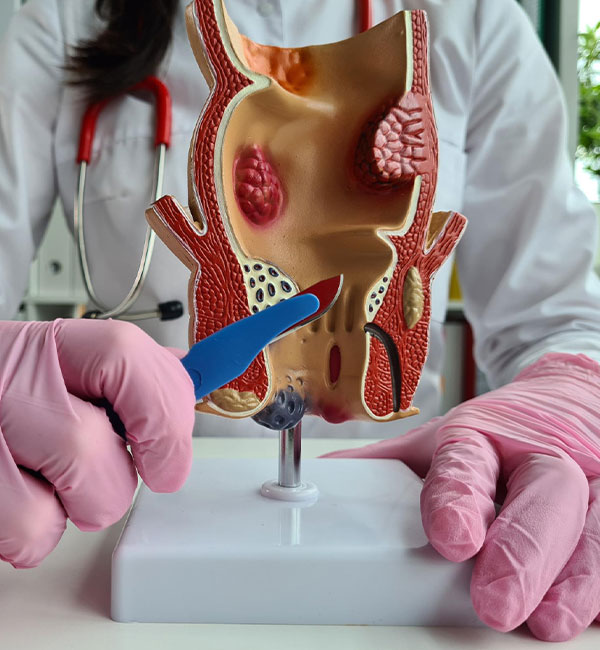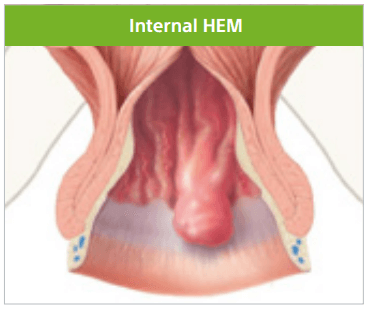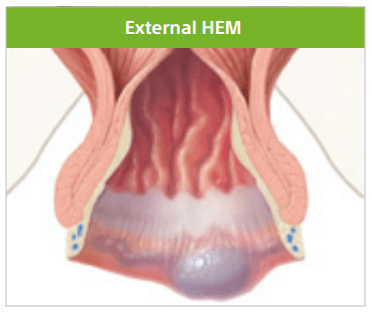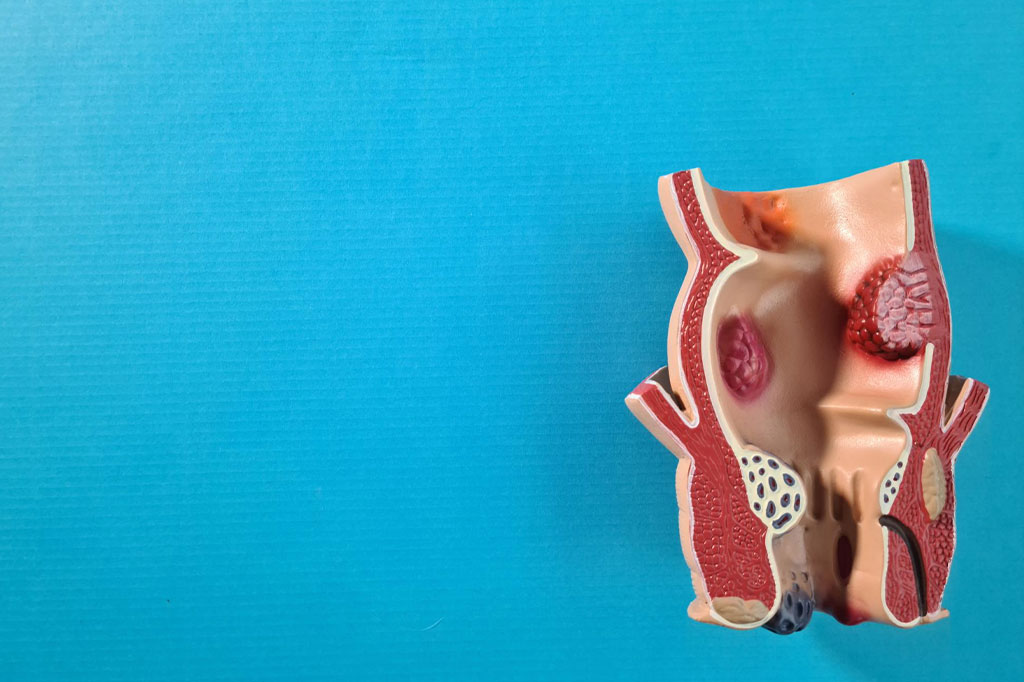Hemorrhoid Artery Embolization

Dr. Kevin Carson
Meet Our Doctor
Kevin L. Carson MD, CAQ
Dr. Carson is an esteemed doctor, specially trained in Cardiovascular and interventional Radiology at Columbia University, and is highly trusted for his expertise in Hemorrhoid Embolization. At Georgia Vascular Institute, Dr. Carson utilizes state- of-the-art equipment and a contemporary facility to deliver exceptional care to his patients who suffer from mild to severe rectal bleeding and discomfort. His empathetic and patient-focused approach, coupled with his exceptional abilities, have earned him recognition as a top healthcare provider in his field and a go-to specialist for effective hemorrhoid treatment.
It Is Estimated That About 75% Of Adults Will Experience Hemorrhoids At Some Point In Their Lives.
Emborrhoid


FREQUENTLY ASKED QUESTIONS (FAQs)
Hemorrhoids are swollen blood vessels located in the
rectum or anus. They can cause discomfort, itching,
and pain.
Hemorrhoids are common and occur in approx. 50% of people during their life with a peak incidence at the age of
45 - 65 years.1
They can be caused through an increase in pressure in the lower rectum by the following reasons:
straining, sitting for long periods, spinal cord injury, chronic constipation or diarrhea, anal intercourse, family history of
hemorrhoids, excessive exercise.
Eating high fiber food, drinking enough fluid and exercise help preventing the occurrence of hemorrhoids. Avoid straining
when sitting on the toilet, and in general, long periods of sitting.
Consult a healthcare professional for accurate hemorrhoid diagnosis; Common symptoms include: Bleeding, Swelling, Discomfort, Ltching
The embolisation treatment is the best option for you if you suffer from internal hemorrhoids of grade 2 or 3 and treatment
with hygiene and dietary measures, medication or non-surgical minimally invasive methods was not successful. Also,
if you did not benefit from a surgical treatment, this technique can be the right option for you.7
Prior to treatment a
CT Angiography will be performed to identify if this procedure is suitable for your vascular anatomy.
You should not undergo this treatment in case you have a grade 4 internal hemorrhoid, acute hemorrhoidal complications,
a history of colorectal surgery or chronic anal fissures. Allergy to the contrast medium is also a reason to not undergo this
procedure.
WHAT IS A HEMORRHOIDAL DISEASE (HEM)?
Hemorrhoids are cushions of fibrovascular tissue in the anus helping to seal the anus and maintain anal continence. They can be easily irritated, become enlarged and form into swellings, often caused by straining and constipation. The hemorrhoidal disease describes the swollen or inflamed state of these vascular structures inside or around the anal canal. It is the most frequent anorectal disease with 5% – 40% occurrence in the population1


Hemorrhoids can be located internal at the upper part of the anal canal in the rectum or external under the skin around the anus.
Internal Hemorrhoids are more frequent than external Hemorrhoids and can enlarge and slip out (prolapse) through the anal opening. They are graded by their size and severity from grade one to four.

Small swellings on the inside lining of the anal canal, no prolapse is present.

Larger swellings that may prolapse when pushing but go back (reduce) spontaneously.

Prolapse outside the anus and must be pushed back (reduced) manually

Permanently hang outside the anus and cannot be reduced manually, cause pain and bleeding.
WHAT ARE TYPICAL SYMPTOMS CAUSED BY HEM DISEASE?
Bleeding is the most common presenting symptom as hemorrhoidal tissue has increased blood supply.
- When internal hemorrhoids prolapse through the anal canal the tissue can become traumatised leading to bleeding that is bright red in color
- Internal Hemorrhoids may cause itching and perineal irritation
- Prolapsing tissue can lead to “fecal soiling” by impeding the ability of the anal verge to seal
- External Hemorrhoids are typically asymptomatic unless they become thrombosed or inflamed
- External thrombosed Hemorrhoids cause a painful perianal swelling

WHAT ARE THE TREATMENT OPTIONS FOR HEM DISEASE?
There are several suggested treatments, according to the severity of the symptoms:
Dietary and lifestyle changes
Drug Therapy
Non-surgical minimally invasive treatments
- Rubber Band Ligation
- Radiofrequency Ablation
- Infrared Photocoagulation
- Sclerosis Injection
Surgery Minimal invasive surgery
- Doppler-guided hemorrhoidal ligation (DGHAL)
Alternative non-surgical treatment:
Embolisation of the Superior rectal arteries
HOW ARE HEMs DISEASES DIAGNOSED?
Medical History
Physical Examination
A visual inspection of the peri anal area will allow for the description of any external abnormalities.
Digital rectal examination
Coloscopy
Allows the endoscopic examination of the entire colon.
Flexible Sigmoidoscopy
Endoscopic examination of the large intestine from the rectum up to the sigmoid (distal colon).
Anoscopy
An anal speculum (anoscope) is used for internal inspection of the lower rectum.

SUPERIOR RECTAL ARTERY EMBOLISATION: PROCEDURAL DETAILS
This minimally invasive procedure is less aggressive than surgical treatment. An Interventional Radiologist performs the procedure. The embolisation technique is applied under local aneasthesia in patients with internal hemorrhoids of grade two or three. 2-7 Internal hemorrhoids are composed of a dense arteriovenous network called Corpus Cavernosum Recti (CCR). The embolisation of the hemorrhoidal artery aims to reduce the blood flow in the CCR, thus reducing the venous pressure and the symptoms.
- A small opening measuring 1.5 mm in diameter is made in the groin area through which a thin catheter is
inserted into the femoral artery. - The catheter is guided through the superior rectal artery tree to the terminal branches while the
Interventional Radiologist watches the progress of the procedure using a a moving x-ray (fluoroscope). - Small coils are placed into the terminal branches of the arteries to seal the vessels.5,6
- It may be necessary to repeat the embolisation for hemorrhoids on the opposite side, through the same
opening and using the same catheter and microcatheter combination.

Hemorrhoidal artery coil embolisation is a painless technique. The procedure time is approx. 50 min. After the procedure, patients can return home on the same day.2
With all medical procedures there are risks associated with the use of a device. Be sure to talk with your doctor so that you thoroughly understand all of the risks and benefits associated with the treatment options.
Advantages of the embolisation technique:
- Leaves hemorrhoidal tissue in place
- No general anaesthesia needed
- Preserves anal continence
- Does not involve the creation of rectal wounds
- Good short-term results
EMBOLISATION TREATMENT – A PATIENT STORY
For 20 years I suffered from haemorrhoids, my daily life was hell: a father of young children, I was unable to run or play with them; I walked like a duck and had to wear a diaper due to the heavy bleeding; I live on the seaside but could not go to the beach or go swimming; I could not even go to the restaurant or out for the evening during a haemorrhoidal attack since I could not sit down! I tried everything, all the creams recommended by the doctors, all the remedies, even old wives‘ remedies, nothing worked. In short, I suffered permanently and could not see any way out, which affected my spirits and my relations with my family. Especially since it is a sensitive subject to discuss and here, in the south of France, it is taboo and people would laugh at you.
One day, however, I came across an article in the local newspaper describing a new technique which consists in embolisation of the haemorrhoidal arteries, conducted in Marseilles hospital by Professor Vidal. They were looking for volunteers and, after consulting several vascular specialists, my case was considered as eligible for the embolisation technique
It is quite simple: I went into hospital in the morning and left at 3 o‘clock, as new man! Under local anaesthesia, Professor Vidal embolised my haemorrhoidal arteries successfully, and from then on, I no longer suffered. I had forgotten what it was like to live normally, I was reborn. To such an extent that I have almost forgotten just how painful it was at the time! It is as if I had never had anything wrong with me. My only regret is that this technique has only been developed
recently, not 20 years ago!

How Does The EMBORRHOID Procedure Work?
A small catheter is inserted into the blood vessels that supply the hemorrhoids. Tiny particles or coils are then placed into these blood vessels to block or reduce the blood flow to the hemorrhoids. By doing so, the hemorrhoids shrink and symptoms such as bleeding, pain, and swelling will be relieved.

The Emborrhoid Technique
This minimally invasive procedure is less aggressive than surgical. The embolization teachnique is applied under local anesthesia in patients with internal hemorrhoids of grade two or three. The hemorrhoidal embolization is a painless technique. It requires only about 50 minute and patients can return home on the same day.
Emborrhoid Procedure Benefits Carson
Minimally Invasive:
No surgical incision’s, minimal discomfort, and fast recovery time
Effective Results:
Reduction in hemorrhoid size, relief from symptoms, and improved quality of life.
Outpatient Procedure:
Conveniently performed in our clinic, avoiding the need for hospital stays.
